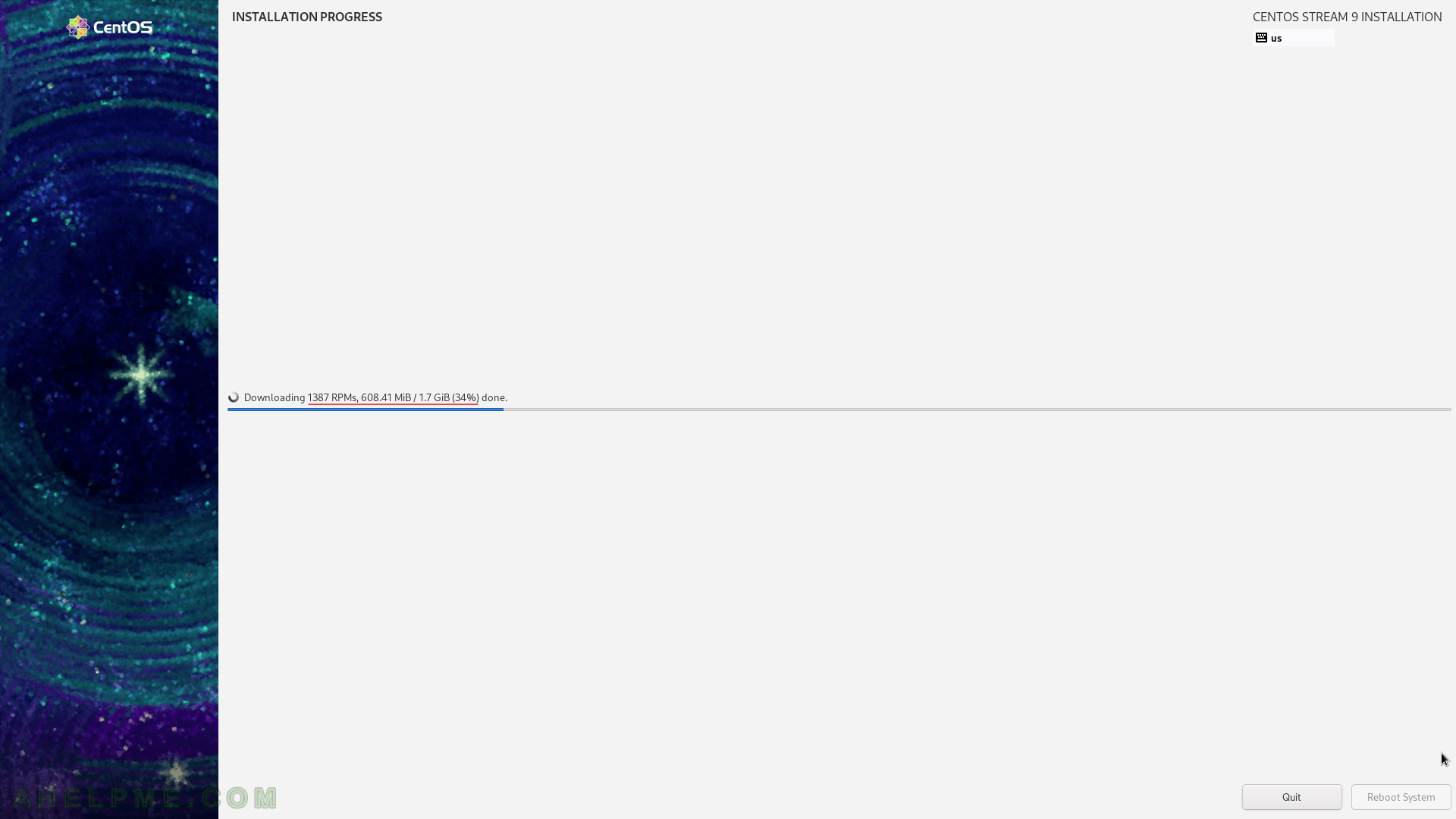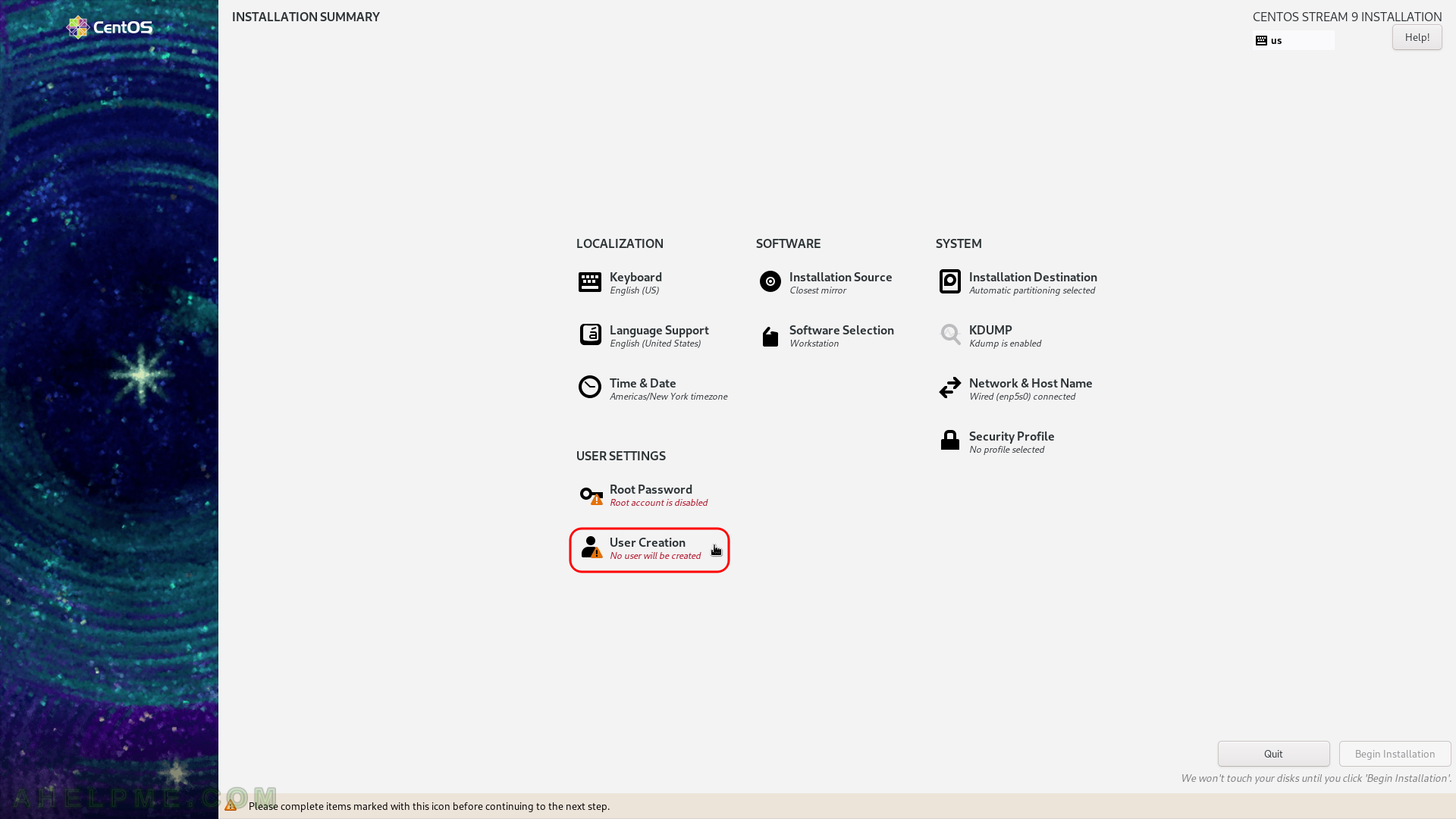SCREENSHOT 11) Installation destination – on which device you want to install the CentOS Stream 9.
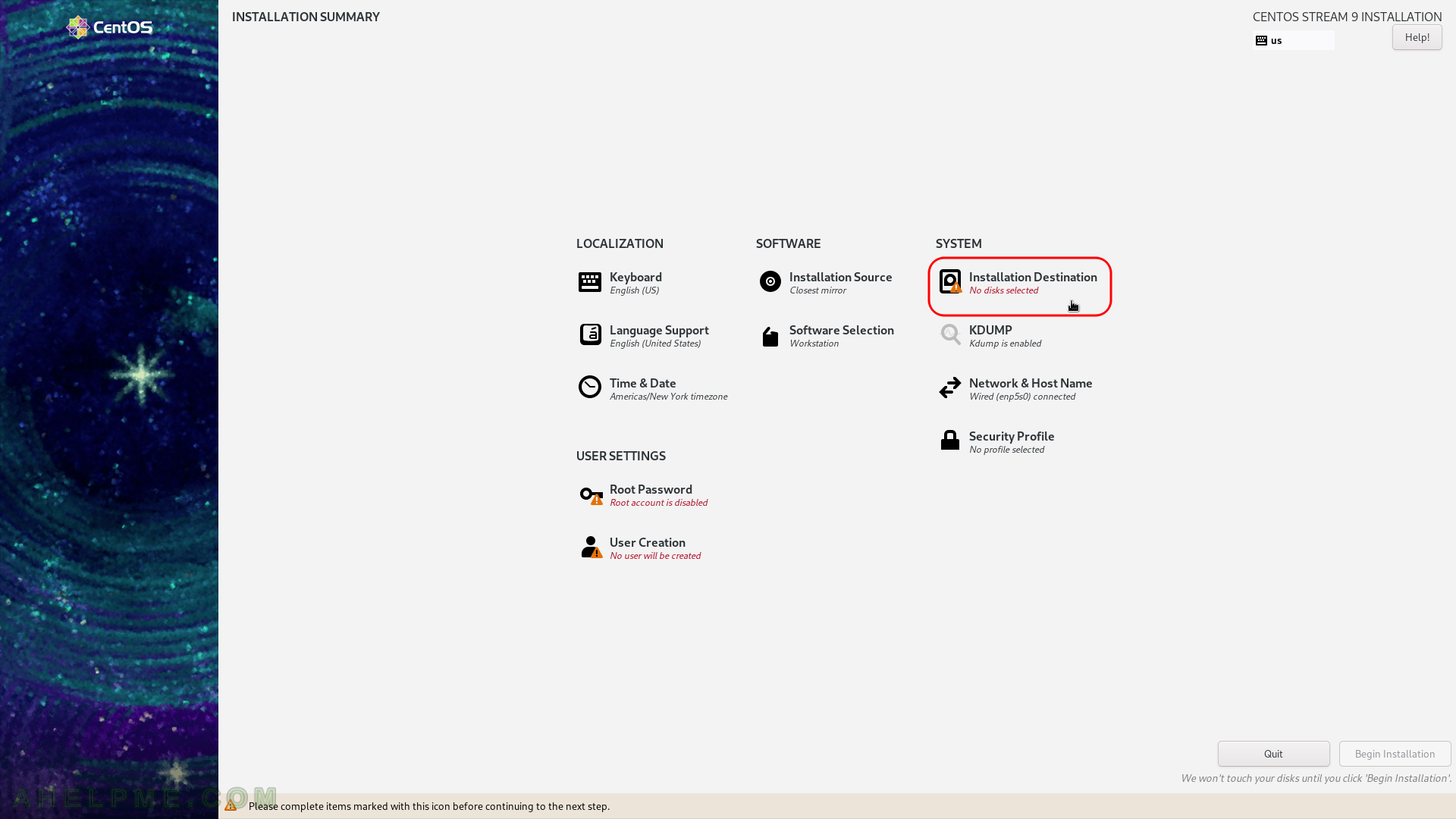
SCREENSHOT 12) Installation Destination – choose your disk to install CentOS Stream 9. SDA selected.
Ensure the automatic storage configuration is selected. This will erase all of the data on the selected disk and will install a clean copy with default disk layout. If you do not have enough space on the selected disk, the setup will ask you to erase the data on the disk. If the disk is blank it will not ask you anything. If you want a specific installation you should choose “Custom” or “Advanced Custom(Blivet-GUI)” (these options are beyond the scope of this article). Click on “Done”.
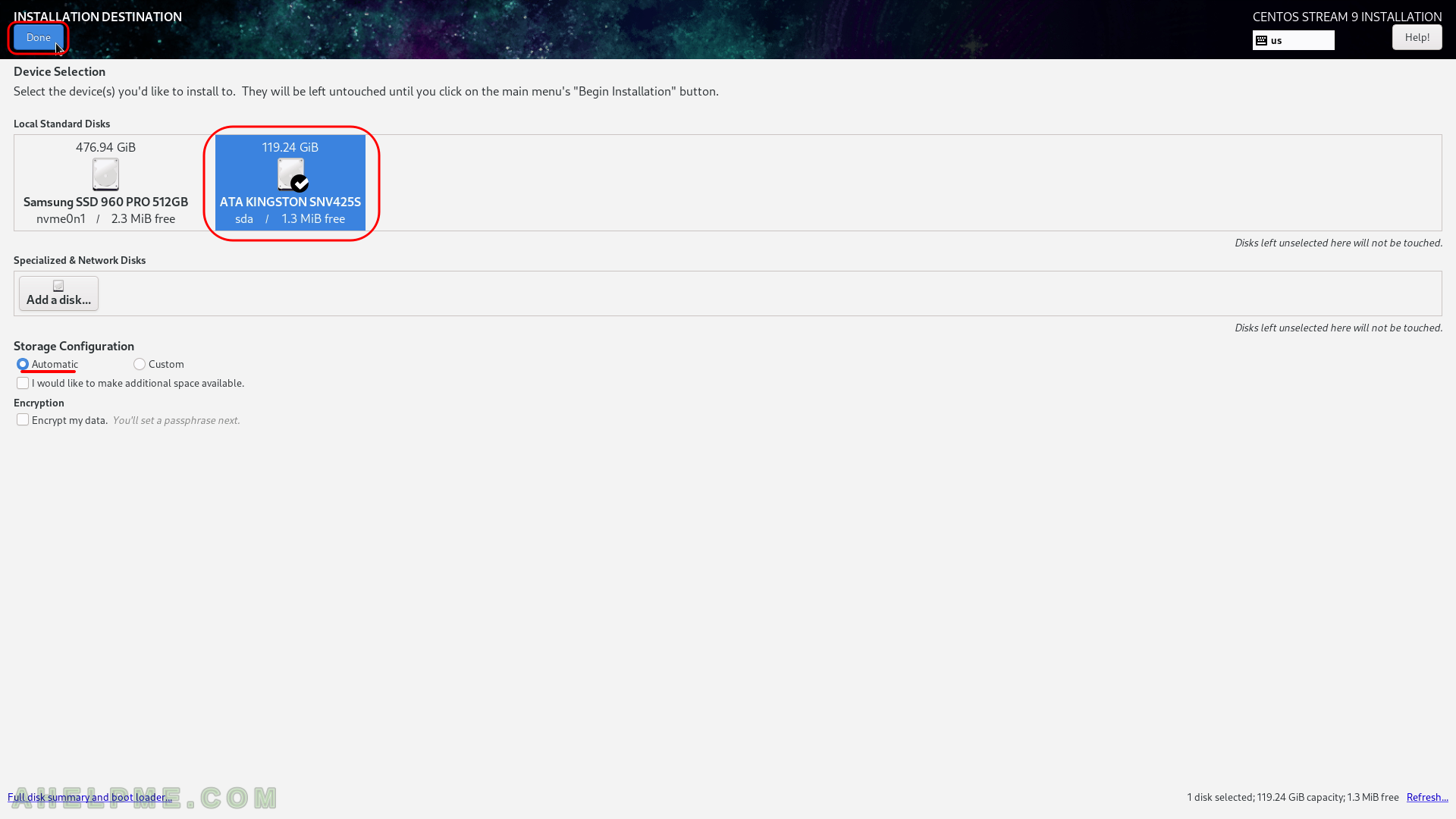
SCREENSHOT 13) CentOS Stream 9 needs 23.81 GiB of available space on the selected disk at least (in fact only 8.15 GiB without the swap space and 15.66 GiB for swap space)!
If there is less than the requested size of free (available disk) space the setup will offer you to free some space by removing existing data (partitions). If the selected disk is with important data and you do not know what you are doing, stop and don’t continue! If this hard drive is with no important data you may proceed by clicking on “Reclaim space”.
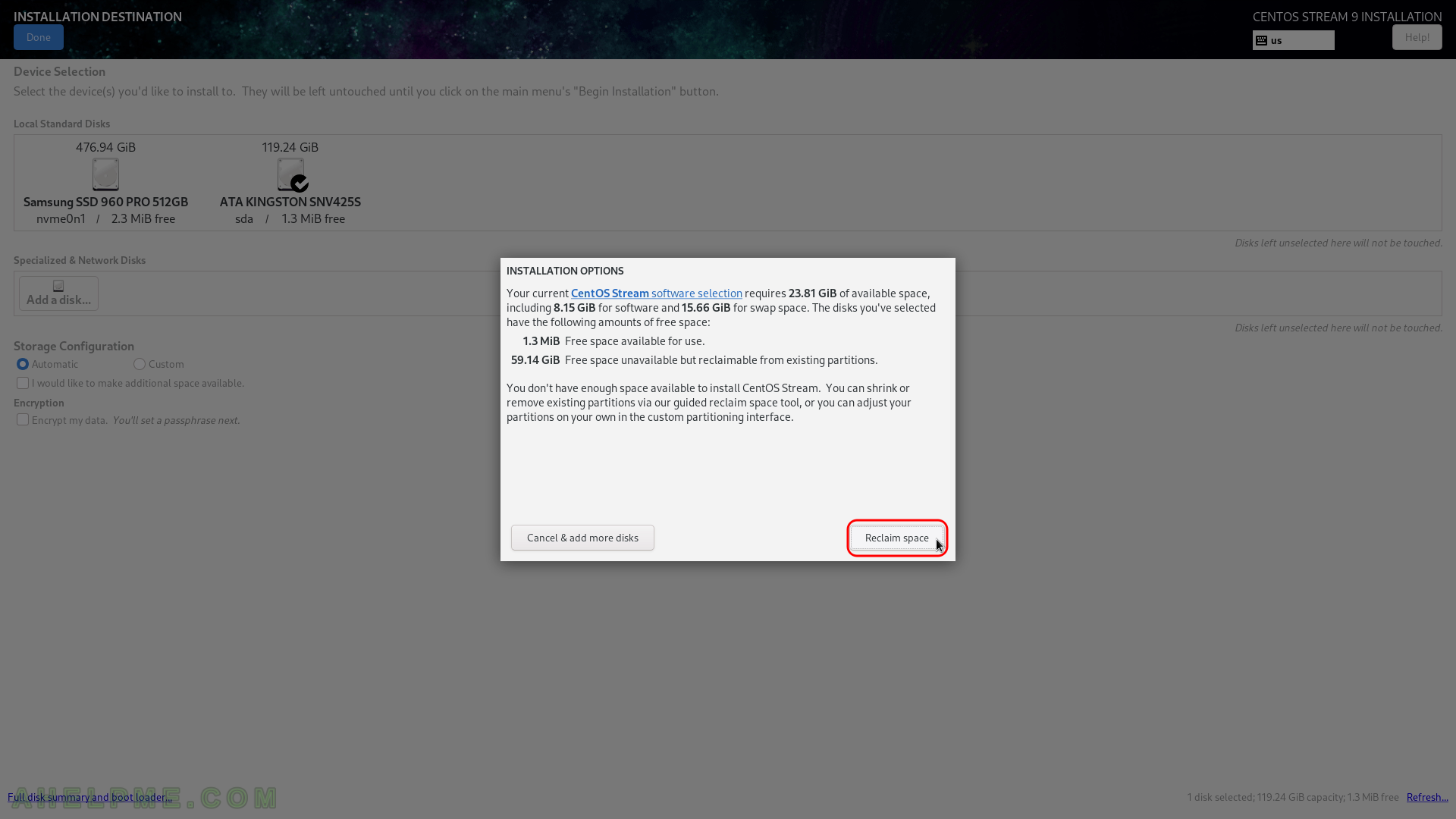
SCREENSHOT 14) Delete all of the data is the easiest way when you have unnecessary data in the disk and you decided to remove all the data from the disk.
Click on “Delete all” if this is the case. Be careful not to remove something you might need in the future! If you know what you are doing you can free some space (make it available i.e. enough unpartitioned space (~24 GiB at least), which is what the setup needs to proceed) by deleting or shrinking the existing partitions.
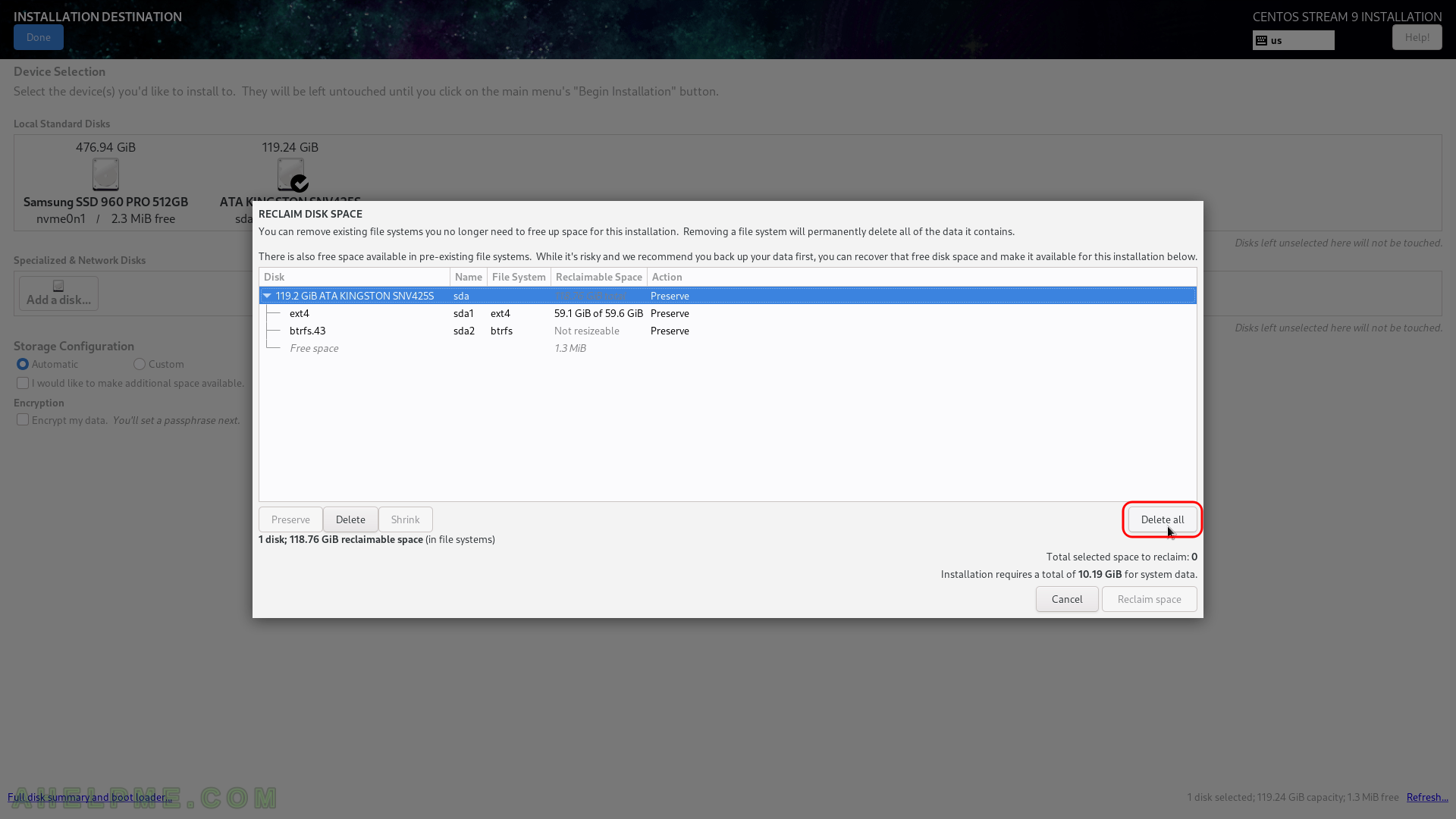
SCREENSHOT 15) Click on “Reclaim space” to confirm the operation in the previous step – deleting or shrinking of partitions.
You can see the operations the “Action” column, which will be performed on the selected disk after the installation setup begin its actual work. In our case we wanted to delete all data on the disk, so there are four Delete actions pending…
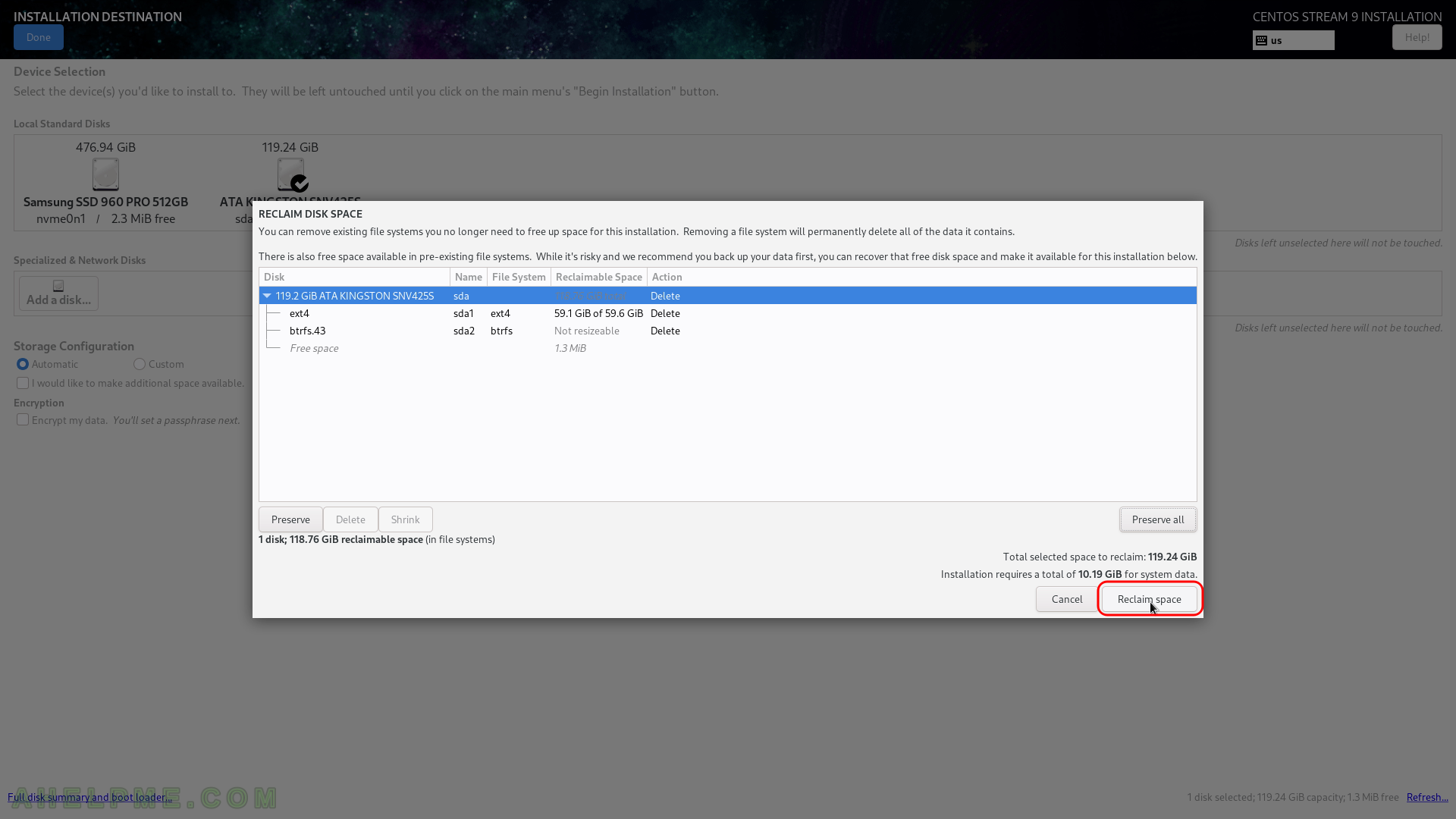
SCREENSHOT 16) Click on “User Creation” to create an administrative user and set the password.
SCREENSHOT 17) Create an user and check “Make this user an administrator” to be able to escalate user privileges when you need to administrate the system.
Fill the name and the password accordingly and then click on “Done”.
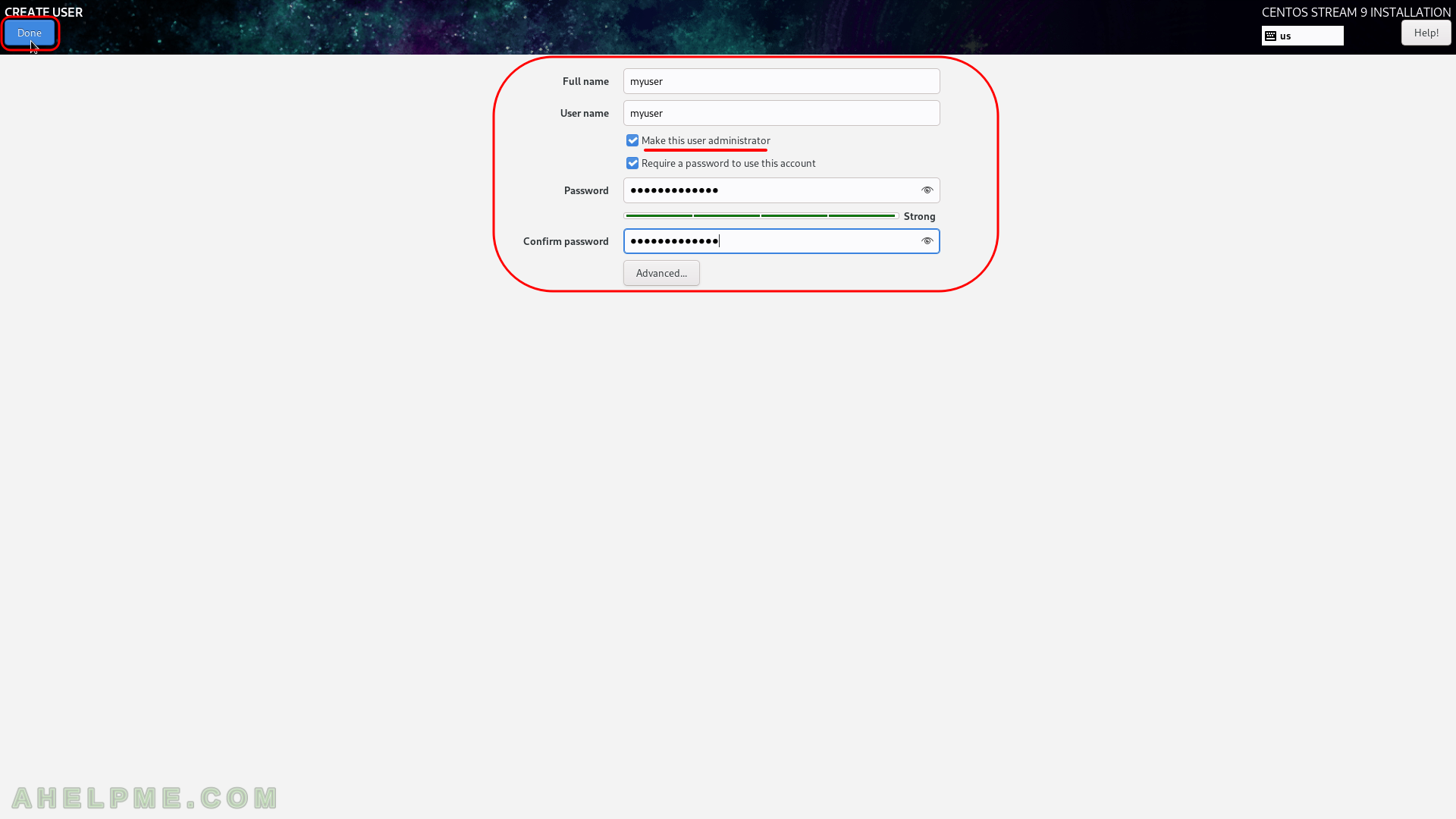
SCREENSHOT 18) Now the installation setup is configured and by clicking on “Begin Installation” the actual installation on your selected hard drive begins.
The actual installation begins and first the disk must be prepared, so after clicking the very button the disk layout will be changed according the last 3 steps.
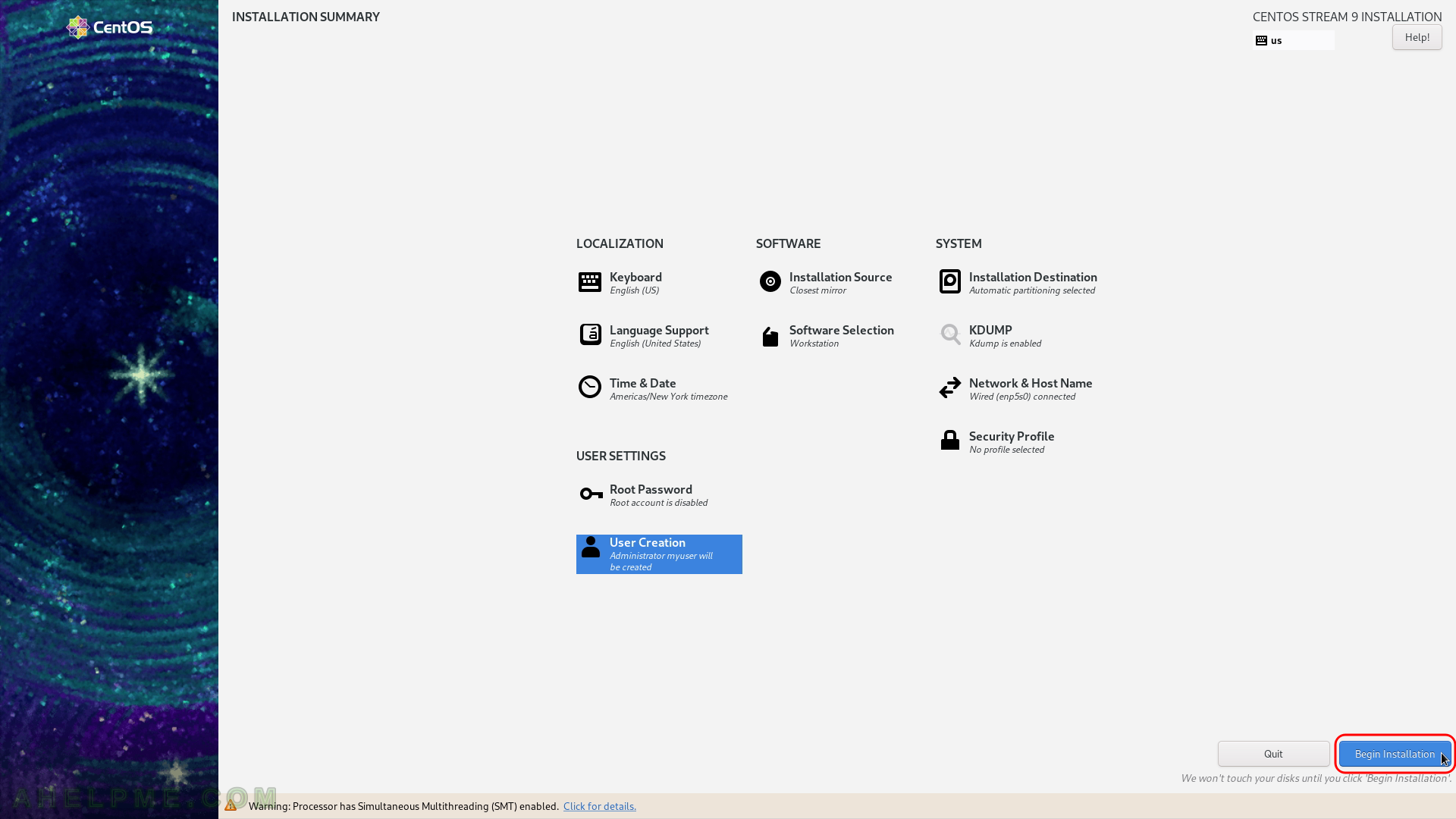
SCREENSHOT 19) The setup is changing the partition layout of the disk.
New partitions are created according to the user selection in the previous step – “Installation destination”.
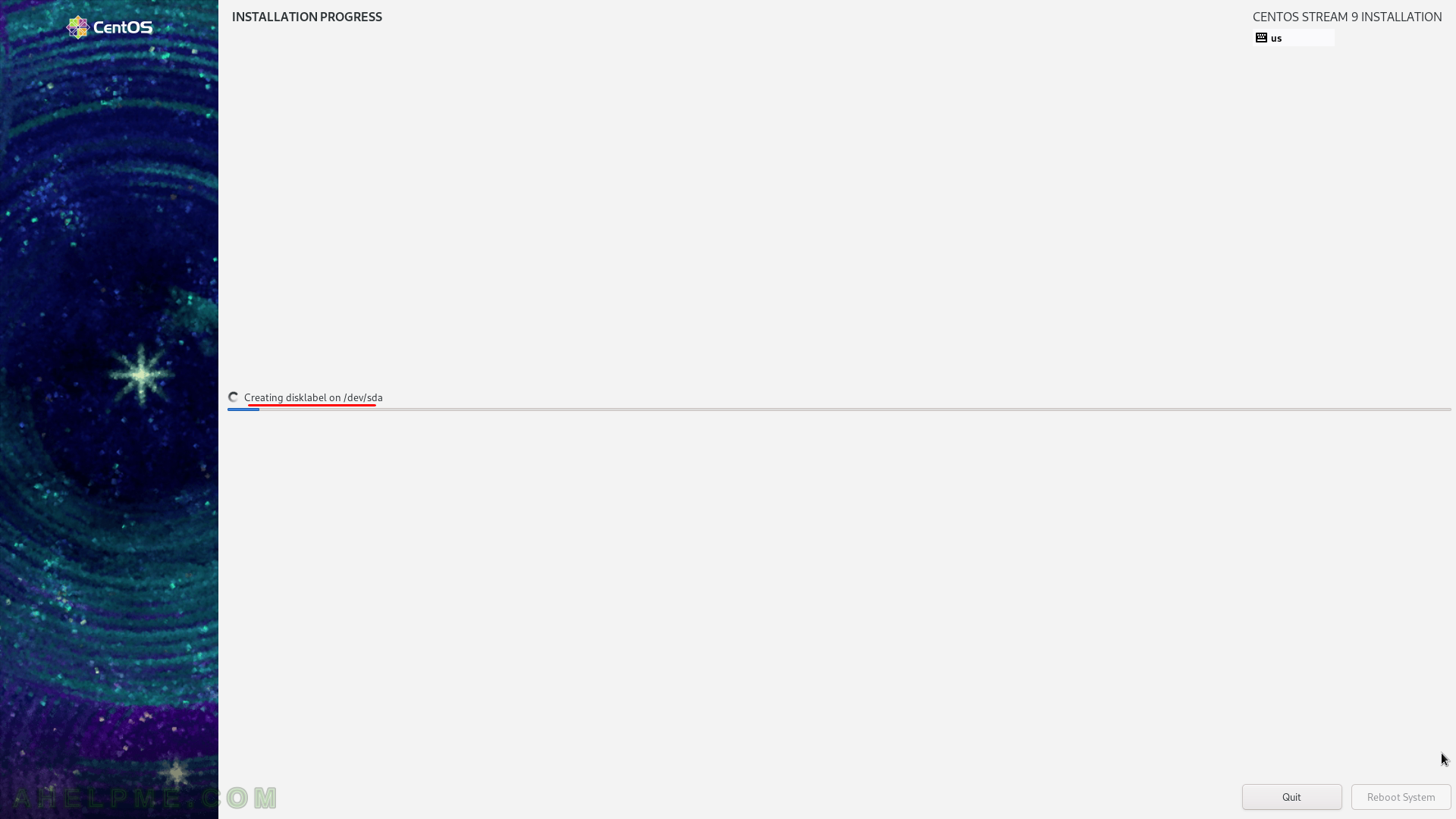
SCREENSHOT 20) There is an installation progress, which informs the user for couple of actions such as downloading and installing the packages, configuring the boot loader and scripts.
1387 packages of total 1.7 GiB will be downloaded from the Internet, because this is a network installation and all the packages are downloaded from the nearest CentOS Stream 9 mirror.
